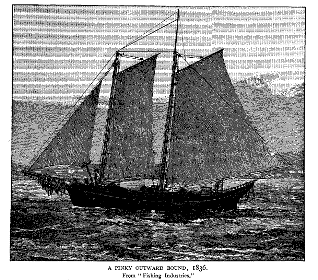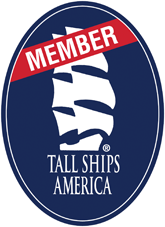Gloucester Fishing Industry—1800s
historical timeline of the fishing industry in gloucester
1811 —€“ 20+ ton Pinkies (pinky) were built for fishing then sharpshooters
1812–1814 — Gloucester ships were being captured or destroyed by the British
1814 —€“ During War of 1812, the British attacked Cape Ann capturing vessels along the wharves and held for ransom of $200 each. Three more attacks occurred during the war, the most notable at Sandy Bay (Rockport).
1816 — 30+ ton ships were built called jiggers for mackerel fishing
1819 —€“ Gloucester Fishing Company started and built 6 schooners
1845 —€“ ice packing becomes common for bringing fresh fish to market instead of salt packing
1845 — “€œSquare sterns”€ built replacing the pinky—then half-clippers—then regular clippers.
1848 —€“ purse seine invented and seine fishing began
1850€™s —€“ schooners that went to Georges Bank were called Georgesmen
1850 —€“ 1st Gloucester owned clipper made in Essex
1851 —€“ Gloucester is the largest fishing port in the country with about 50 fishing companies
1858 —€“ trawls introduced for fishing
1861–1865 —€“ Civil War: high demand for fish increases price
1863 —€“ Confederate raiders destroyed 6 Cape Ann schooners on Georges Bank. The defensive forts of Gloucester were then repaired and manned.
1876 —€“ Francis Homans created Fernwood Lake for his icehouse business
1878 — The U.S. Fish Commission opened a permanent station in Gloucester, would eventually become the first seafood technology lab in the United States.
1879 —€“ gill netting started to be used and splitting and curing fish at sea started
1883 —€“ Howard Blackburn survived a winter gale at sea in a dory and rowed for many days to Newfoundland
1891 —€“ beam-trawling tested in Gloucester fleet, Fishermen’s Memorial Services initiated








 Â
 


